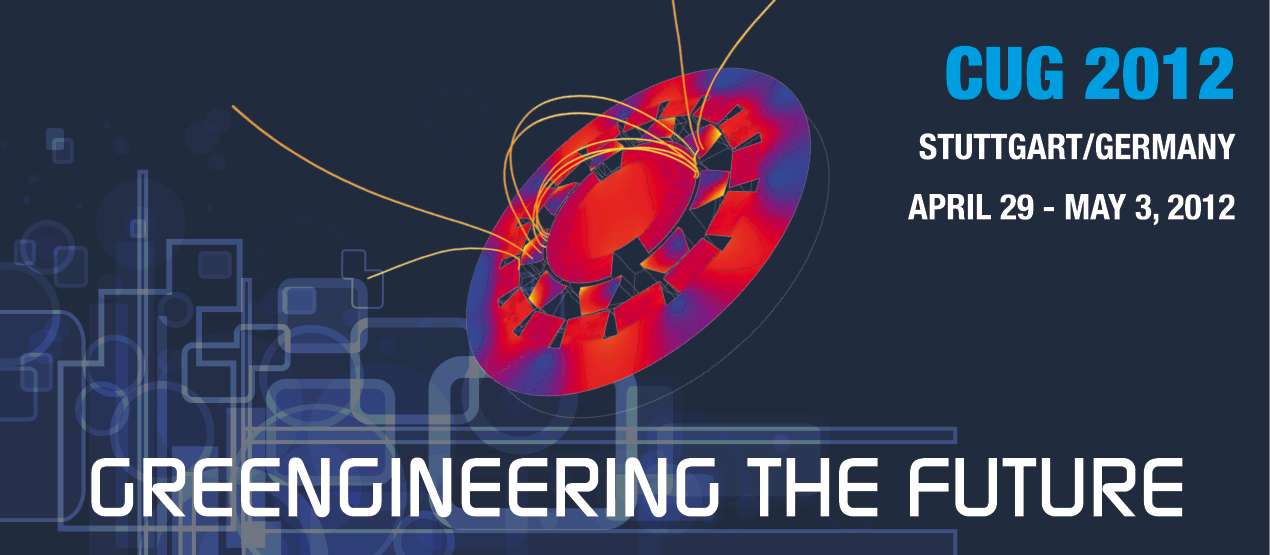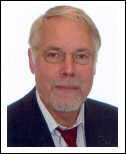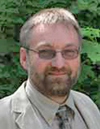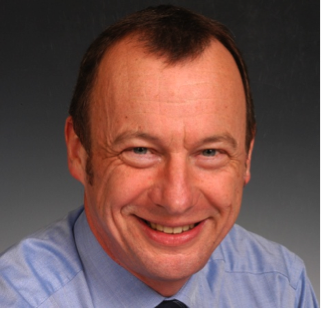
Invited Speaker - Prof. em. Dr.-Ing. E. Göde

The Cray User Group welcomes Professor em. Dr.-Ing. E. Göde as our Keynote Speaker on Monday, 30 April 2012.
Numerical Engineering for Hydropower Applications
Modern Engineering is more and more based on numerical simulation. Complete machines as well as components crucial for good machine operation are tested by use of numerical modelling before they are built. Doing this well can save time and money, other wise it can be time consuming and can produce a lot of trouble.
In this context Hydropower applications are of special interest not only because Waterpower is the most important renewable source of energy on earth but because each Hydroelectric Power Station needs a special design. Discharge and head as the main design parameter are never the same at different sites. As a consequence, in order to achieve best use of the hydraulic potential on site, tailor made design is required.
However, statistics based on world wide experience with the operation of existing Hydropower stations show that only less than half of the power stations are running well and perform as planned. The others show more or less troubles with the operation as there is rough running, vibration, noise, cavitation, lack in efficiency as well as power output.
Biography, Prof. em. Dr.-Ing. E. Göde
Education and Career Data:
1971 graduated in Aeronautical Engineering at Technical University of Berlin (Dipl.-Ing.)
1978 Dr.-Ing. Degree (equivalent to Ph. D.) at Technical University of Berlin, on: Nu-merical simulation of the flow around Engine-Wing Configurations
1979 Head of aerodynamic development for multistage axial compressors, at Sulzer Bros. Zurich, Switzerland, Thermal Turbomachinery
1984 Head of numerical flow simulation, at Sulzer Escher Wyss, Zurich Switzerland, Hydraulic R&D
1987 Head hydraulic profile design, responsible for runner design especially for Up-grading and Modernisation of existing Hydro Electric Power Plants, at Sulzer Escher Wyss, Zurich Switzerland, Hydraulic R&D
1991 Winner of Sulzer Innovation Award worldwide, Engineering (1. Price): Numerical Optimisation of Runners for Hydraulic Turbomachines
1994 Full Professor, Director of the Institute for Fluid Mechanics and Hydraulic Ma-chinery (IHS), at University of Stuttgart.
1995 Head of the German IEC/TC4 Hydraulic Turbines sub committee
1996 Head of German VDMA-Committee ,Hydro Electric Power Plants'
1998 to 2000 Dean of the Faculty Energy Technology, University of Stuttgart
2006 to 2007 Dean of the Faculty Mechanical Engineering, University of Stuttgart
2008 Winner of the IEC–1906 Award
2010 retired.
Prof. Göde has published more than 80 Papers on Hydraulic Design, Parametric Design, Virtual Reality Numerical Flow Simulation, focus on Hydro Power, Upgrading of Hydro Electric Power Plants, and Trouble Shooting on Hydro Electric Power Plants.
Prof. Göde has designed more than 50 water turbine runners for hydro electric power plants through out the world, including:
Tarbela, Pakistan, 440 MW Output at rated head, the biggest Francis-Turbine ever built by Sulzer Escher Wyss;
R. H. Saunders, Ontario, Canada, 65 MW per turbine, axial Propeller Re-placement Runner, published in: WaterPower '91, Hydraulic design and devel-opment of Propeller replacement runner for R. H. Saunders, E. Goede et. al. ;
Saaheim, Norway, 65 MW new at 268 m head, Francis Replacement Runner, 40% more Power at best efficiency with the new runner, ;
Mc Cormick, USA, 48 MW new at 36.6 m head, Francis Replacement Runner, 13% more Power at full load with the new runner, ;
Kiebingen, Taubenloch, Kehl, Burgkhammer, Hirschaid, small hydro Power Plants in Germany as well as Switzerland, type of turbines: Kaplan, Propeller, Francis, new and replacement as well.
Invited Speaker - Prof. Dr. Wolfgang E. Nagel, Director, Center for Information Services and High Performance Computing (ZIH), 01062 Dresden

The Cray User Group welcomes Professor Wolfgang Nagel as our Invited Speaker on Tuesday, 1 May 2012.
From PetaScale to ExaScale: How to Improve Sustained Performance?
Parallelism and scalability have become major issues in all areas of Computing — nowadays pretty much everybody, even beyond the field of classical HPC, uses parallel codes. Nevertheless, the number of cores on a single chip – homogeneous as well as heterogeneous cores – is significantly increasing. Soon, we will have millions of cores in one HPC system. The ratios between flops and memory size, as well as bandwidth for memory, communication, and I/O, will worsen. At the same time, the need for energy might be extraordinary, and the best programming paradigm is still unclear.
Furthermore, we have reached a point where data becomes the primary challenge, be it complexity, size, or rate of the data acquisition. This talk will describe technology developments, software requirements, and other related issues to identify challenges for the HPC community, which have to be carefully addressed – and solved – within the next couple of years.
Biography, Prof. Dr. Wolfgang E. Nagel
Prof. Dr. Wolfgang E. Nagel holds a Chair for Computer Architecture at Dresden University of Technology (TUD). He has studied computer science at RWTH Aachen from 1979 to 1985. Since 1985, he has worked in the area of parallel computing at the Central Institute for Applied Mathematics, Research Center Jülich, and at the Center for Advanced Computing Research (CACR), Caltech. In 1997, he became the founding director of the Center for HPC (ZHR) at Dresden University of Technology (now called ZIH). From 2006 to 2009, he acted as the dean of the Computer Science department at TUD. He is a member of the DFG commission for IT-Infrastructure (KfR), chairman of the Gauß-Allianz, and a member of the International Exascale Software Project (IESP). His research profile covers modern programming concepts and software tools to support complex compute and data intensive applications, analysis of innovative computer architectures, and the development of efficient algorithms and methods. He has published about 110 papers in those areas, and served as a program committee member, program chair, or general chair for more than 45 conferences and workshops.
Invited Speaker - Vice-Principal Professor Richard Kenway OBE FRSE FInstP CPhys DPhil BSc

The Cray User Group welcomes Professor Richard Kenway as our Invited Speaker on Wednesday, 2 May 2012.
PRACE for Science and Industry
The Partnership for Advanced Computing in Europe was established as an international non-profit association, PRACE AISBL, in 2010 to create a pan-European supercomputing infrastructure for large-scale scientific and industrial research at the highest performance level. It has 24 member states and currently allocates petascale resources in France, Germany, Italy and Spain, through world-wide open competition. This talk will describe the successes of PRACE so far and its vision for the future.
Biography, Vice-Principal Professor Richard Kenway
Professor Kenway was appointed to the Tait Chair of Mathematical Physics at the University of Edinburgh in 1994. His research explores non-perturbative aspects of theories of elementary particles using computer simulation of lattice gauge theories, particularly the strong interactions of quarks and gluons described by Quantum Chromodynamics (QCD). He led UK participation in the QCDOC project to build three 10 teraflops computers to simulate QCD, jointly with the USA and Japan, and these machines operated successfully from 2004 to 2011. Currently he leads UK participation in a follow-on project with IBM and Columbia University to build and exploit a 1.26 petaflops prototype BlueGene/Q computer, which is being installed at the University of Edinburgh. In 2002, he initiated the International Lattice Data Grid project, which provides a global infrastructure for sharing simulation data. As Vice-Principal, Professor Kenway is responsible for the UK's High-Performance Computing Service and for promoting advanced computing technology to benefit academia and industry. For ten years, until it closed in 2011, this included the National e-Science Centre. From 2008 to 2011, he was Head of the School of Physics and Astronomy. In the Queen's 2008 Birthday Honours, Professor Kenway was awarded an OBE for services to science. Currently, he chairs the Scientific Steering Committee of the Partnership for Advanced Computing in Europe (PRACE) and the Board of the Scottish Universities Physics Alliance (SUPA).
|
